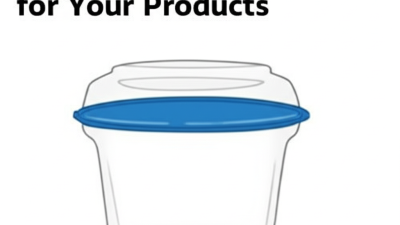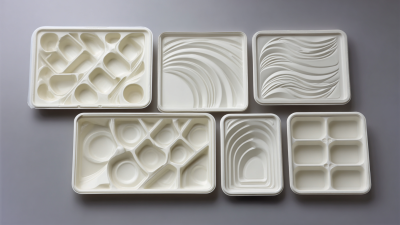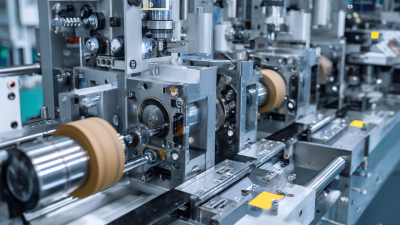How to Choose the Right Shipping Trays for Your Business Needs
In today's competitive market, selecting the appropriate shipping trays is crucial for optimizing logistics and ensuring product safety. According to a report by Grand View Research, the global packaging market is projected to reach $1 trillion by 2027, with a significant portion attributable to efficient shipping solutions. Shipping trays not only enhance the protection of goods during transit but also contribute to sustainability efforts, with 60% of businesses prioritizing eco-friendly packaging options, as highlighted by a recent study from Smithers. As companies strive to streamline operations and reduce costs, understanding the diverse materials and configurations available for shipping trays becomes essential. This guide will equip you with the knowledge to choose the right shipping trays tailored to your business needs, ensuring efficiency and cost-effectiveness in your shipping processes.

Understanding Your Business Requirements for Shipping Trays
When it comes to selecting the right shipping trays for your business, understanding your specific requirements is crucial. Shipping trays are integral for protecting products during transit, reducing damages by up to 30% according to recent industry reports. This not only minimizes losses but also ensures customer satisfaction through timely and safe delivery. Analyzing your product dimensions, weights, and any specific handling needs will lead you to the most appropriate tray options.
Tips: Consider utilizing trays made from sustainable materials. According to a 2022 study by Packaging Digest, nearly 70% of consumers prefer products packaged in eco-friendly materials. This can enhance your brand image and appeal to a growing market segment that prioritizes sustainability.
Additionally, think about the volume of shipments you handle. A report from the International Journal of Logistics Management indicates that businesses with high shipping frequencies should invest in standardized tray sizes to improve efficiency and lower costs. Streamlined operations not only save time but also reduce packaging waste, aligning your operations with environmental goals.
Exploring Different Materials and Their Benefits for Shipping Trays
When choosing the right shipping trays for your business, the material used can significantly influence sustainability, cost, and effectiveness. Various options are available, each with its unique benefits. For instance, natural fiber composites made from renewable resources like jute, flax, and hemp are becoming popular due to their eco-friendly nature. These materials not only reduce environmental impact but also offer robust support for products during transit, making them a viable alternative to conventional materials.
Another innovative option includes biodegradable bioplastics, derived from renewable natural resources. These materials provide an excellent alternative to traditional plastic, meeting the growing consumer demand for sustainable packaging solutions. Utilizing such packaging can help businesses reduce their carbon footprint while preserving the quality of the products, especially in food sectors where shelf life and reliability are paramount.

Advancements like integrating agricultural waste, such as blueberry pomace, into moldable fiber trays exemplify how industries can transform waste into valuable resources, further enhancing the sustainability profile of shipping trays.
Evaluating the Size and Design of Shipping Trays for Efficient Storage
When selecting shipping trays, evaluating their size and design is crucial for maximizing storage efficiency. Recent industry reports indicate that businesses can save up to 30% on storage space by using appropriately sized trays that fit their products snugly. This not only reduces the footprint in warehouses but also minimizes the risk of damage during transit, as tightly packed goods are less likely to shift.
Tips: When measuring for trays, consider the dimensions of your product and opt for trays that allow for 1-2 inches of clearance while maintaining a snug fit. Additionally, look for trays designed with stackability in mind, as this can further optimize vertical storage space.
The design of shipping trays can also impact operational efficiency. For example, choosing trays with ergonomic handles can streamline the loading and unloading process, reducing worker fatigue. According to a study by the Logistics Management Association, businesses that utilize ergonomically designed materials can improve handling speed by up to 20%.
Tips: Always examine the material of the trays. Opt for lightweight yet sturdy options, such as plastic or composite materials, that can support the weight of your products while being easy to maneuver.
Assessing Cost-Effectiveness and Durability in Shipping Tray Selection
When selecting shipping trays, assessing cost-effectiveness and durability is crucial for ensuring that your business meets its logistics requirements without compromising quality. Cost-effectiveness involves evaluating not only the initial purchase price of the trays but also their long-term value. Consider factors such as the trays' lifespan, the frequency of reuse, and how they integrate with your shipping processes. A more expensive tray that can be reused multiple times may ultimately be a better investment than a cheaper option that needs frequent replacement.
Durability plays a pivotal role in maintaining product integrity during transit. Shipping trays made from robust materials like high-density polyethylene or polypropylene offer enhanced resistance to damage, which can reduce losses and returns. Evaluate the trays based on their ability to withstand environmental factors, such as moisture and temperature fluctuations, especially if your products are sensitive. Balancing these two factors—cost-effectiveness and durability—will lead to a more efficient shipping strategy that can save money while ensuring reliable service for your customers.
Recognizing Environmental Impact and Sustainability in Tray Choices
When selecting shipping trays for your business, considering the environmental impact and sustainability of your choices is increasingly important. The global market for pulp-based disposable tableware is anticipated to grow to $11 billion by 2024 and reach $17.5 billion by 2032, indicating a strong shift towards eco-friendly packaging solutions. This growth trend is fueled by consumer demand for sustainably sourced materials, which drives manufacturers to innovate in the way they approach production and material selection.
Among the various options available, stackable egg trays exemplify a significant trend towards using sustainable and biodegradable materials. As the industry evolves, a keen focus on environmentally responsible manufacturing practices is shaping the future of packaging. This effort is mirrored across various sectors, including the meat and fresh food packaging markets, which are also moving toward more recyclable and sustainable options. Companies are recognizing that adopting such practices not only benefits the environment but also appeals to a growing segment of eco-conscious consumers, positioning them favorably in a competitive marketplace.

Related Posts
-

How to Choose the Right Stock Blister Packaging for Your Products
-

Addressing Challenges in Clam Packaging for Optimal Product Preservation
-

How to Choose the Right Clear Clamshell Packaging for Your Products
-

7 Tips for Maximizing Efficiency with Thermoform Packaging
-

5 Essential Tips for Choosing the Best Blister Packaging Materials
-

7 Best Strategies to Optimize Your Blister Machine Investment
